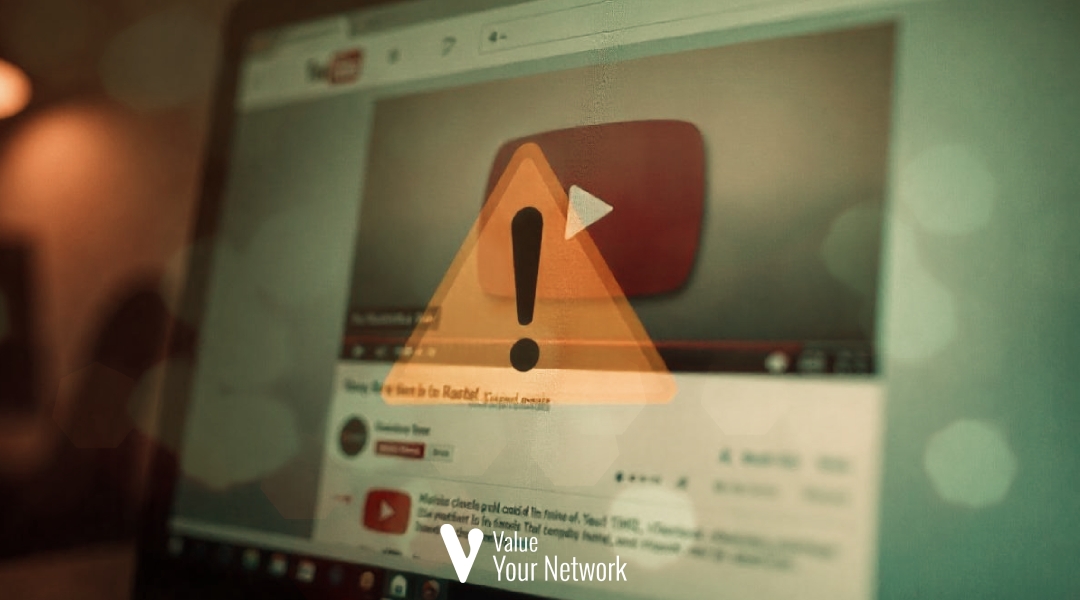An eye-catching visual showing a YouTube screen with a blurred or crossed-out video title accompanied by a warning symbol to illustrate the fight against abusive clickbait.
Visit abusive clickbait has become a real pain for internet users around the world. Imagine this scene: you click on a video titled "the scandal that's shaking the planet" only to discover content that's completely off-topic. The disappointment is immediate. You feel cheated, frustrated, and probably determined not to fall for it again. It's precisely to avoid this negative experience that YouTube has decided to declare war on abusive clickbait, with a first application planned for India. But why now, and more importantly, how will this initiative change your experience on the platform?
Abusive clickbait, a scourge for user experience
Visit abusive clickbait has become a real pain for the platforms video content sharing, especially YouTube. This phenomenon occurs when creators use exaggerated, misleading, or sensationalist titles and thumbnails that in no way correspond to the actual content of the videos. For example, you've probably already clicked on videos announcing incredible revelations or shocking events, only to find that none of this is mentioned in the video. This type of practice leads to a disappointing user experience and seriously damages the platform's credibility.
Abusive clickbait, a threat to user confidence
Abusive clickbait is particularly damaging when it involves sensitive topics like current events or important information. Imagine a thumbnail promising a major political event, such as a president's resignation, but the video doesn't address that topic at all. This not only creates confusion but also potential misinformation. YouTube takes this issue very seriously, knowing that its credibility and that of its honest creators are at stake.
How will YouTube combat abusive clickbait?
To effectively combat abusive clickbait, YouTube will gradually implement a strict policy aimed at removing blatantly misleading content without immediately imposing penalties on the creators concerned. This transition period allows creators to adapt to the new rules without risking an immediate ban or penalty. YouTube emphasizes the importance of clearly informing creators about what exactly constitutes abusive clickbait to avoid misunderstandings.
How the new measures against abusive clickbait work in practice
YouTube will use sophisticated tools powered by artificial intelligence to automatically identify abusive clickbait. The algorithm will notably examine the correspondence between the title, thumbnail, and the actual content of the videos. This advanced technology is capable of quickly identifying glaring inconsistencies, allowing effective action to protect users. For example, if a title mentions a specific event that is not addressed in the video at all, the video will be removed after a thorough evaluation.
The consequences of abusive clickbait for users
Visit abusive clickbait has significant negative consequences for both users and the platform itself. Firstly, it damages the user experience by generating immediate disappointment. As a result, users become more suspicious of the content on offer, which can lead to a general decline in trust in YouTube and its honest creators. In the long term, abusive clickbait can even negatively influence the platform's traffic, driving users to other sources of information or entertainment deemed more reliable.
The benefit to honest creators of fighting abusive clickbait
This fight against abusive clickbait also represents excellent news for serious creators who invest time and resources in creating authentic content. With less unfair competition through deceptive practices, their work will be more highly valued by users and YouTube's algorithm. This initiative could therefore encourage an overall increase in the quality of content, which would benefit all users.
What concrete changes can we expect from this policy?
With this new policy against abusive clickbait, creators will now have to ensure that their titles and thumbnails accurately reflect their content. Videos covering sensitive events such as current events will have to be particularly vigilant about the accuracy of the information provided. Creators will have to review their editorial strategy to avoid any risk of removal or subsequent sanctions.
How does YouTube plan to generalize this fight?
After an initial rollout in India, YouTube will evaluate the results before gradually expanding this policy to other regions around the world. If the results are successful, this policy will likely be adopted globally. Therefore, creators around the world will need to prepare for these new requirements now to continue to fully benefit from the advantages offered by YouTube.
Our opinion on YouTube's decision
This initiative by YouTube against abusive clickbait is clearly positive. It promises a better user experience and encourages greater honesty among content creators. By acting now, YouTube is positioning itself as a responsible platform that cares about its users, while also promoting the work of serious creators.
At ValueYourNetwork, an expert in influencer marketing since 2016, we welcome these initiatives aimed at strengthening the authenticity and credibility of online content. Our expertise in influencer marketing allows us to affirm that authentic creators will always be more successful than those who rely solely on deceptive short-term strategies. Since 2016, we have successfully run dozens of social media campaigns, always based on authenticity and sincere engagement.
What do you think? Share your reactions or experiences in the comments and check out our other related articles to stay informed about important developments in the field of digital marketing and influence.

